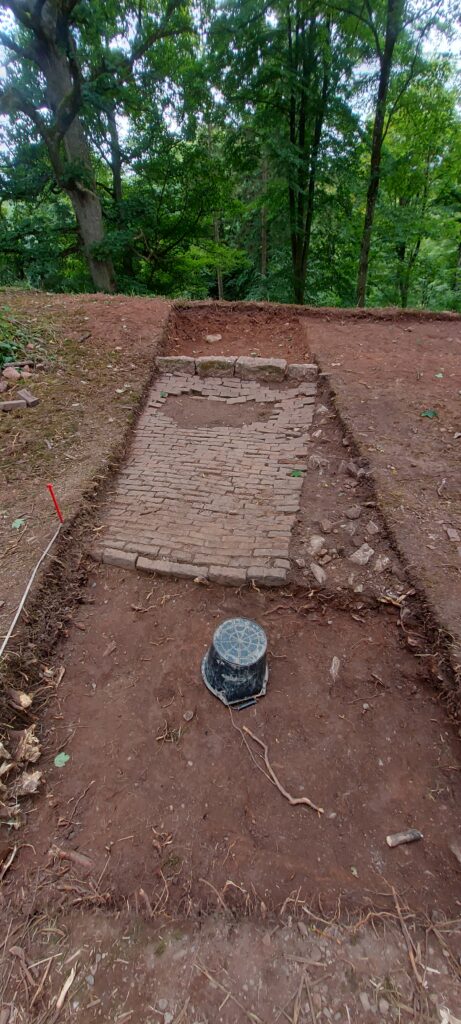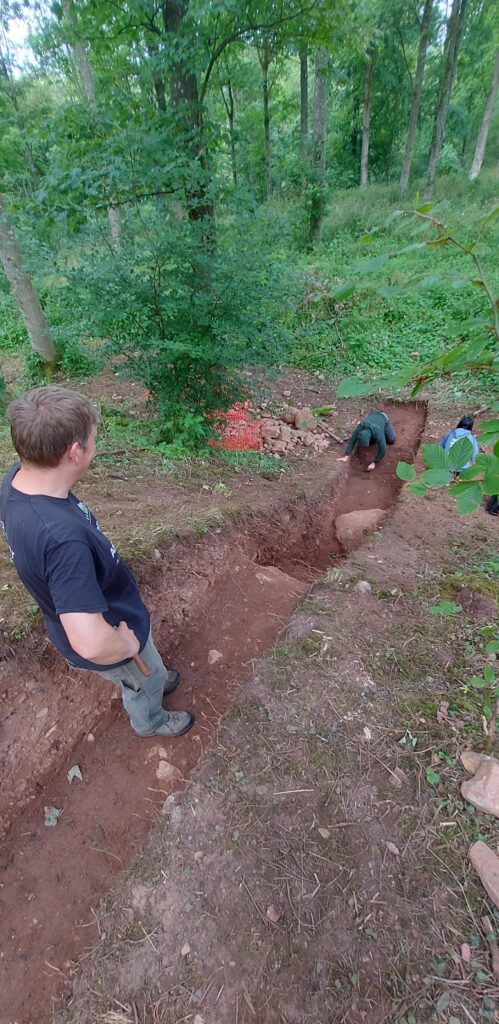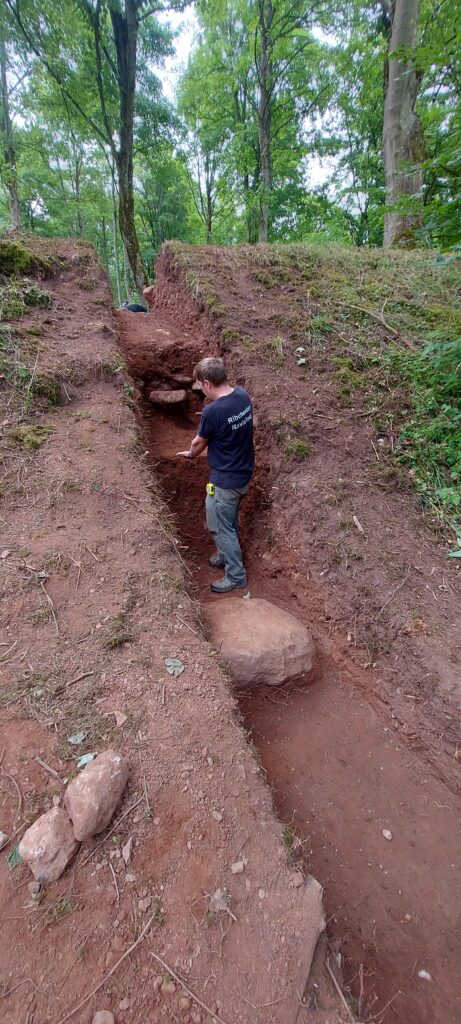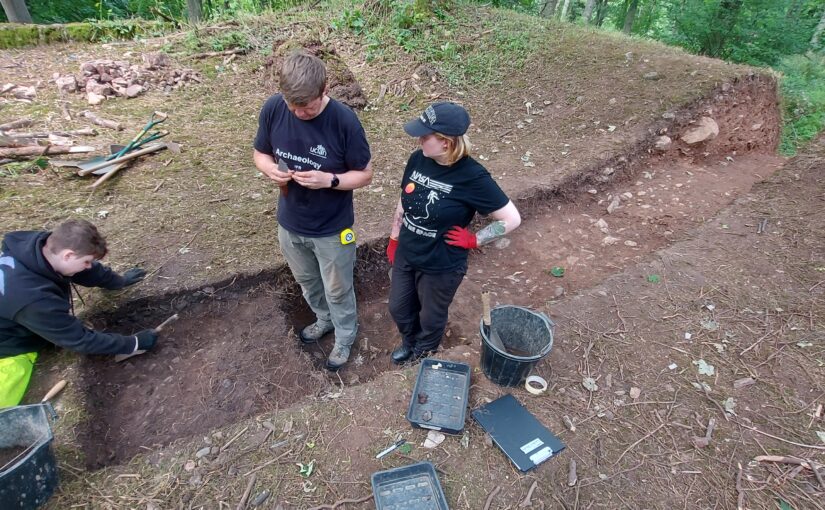At the end of week two of the #LowtherMedievalCastle dig and project lead Sophie Ambler gives us the latest update.
At the end of week two, we’re half way through our excavation of Lowther Medieval Castle and Village, and revealing some intriguing results.
We now have four trenches open, three exploring the medieval castle earthwork and one across the routeway linking castle to village. There is still a great deal of work to be done, so much of what follows involves some speculation, and these findings are very much preliminary!
Subscribe to our quarterly newsletter

Trench One, on the western side of the castle earthwork, has revealed a small brick patio, bounded on the western edge with a course of cut stones. Miscellaneous finds, including a degraded iron doorhandle and pottery sherds, suggest that this might represent a phase of use concurrent with the nineteenth-century castle. Today’s Lowther Castle, the ruins of which overlook the site, was commissioned in 1806 by William, 1st Earl of Lonsdale. One theory is that the patio relates to the ‘Countess’s Stairs’, which once led up the steep slope from the River Lowther – perhaps towards the patio or a now-lost structure, which may have afforded a view across the river.

Trench Two, which cuts through the northern bank of the medieval castle earthwork, is starting to give us a real insight into how the fortification was constructed. We might expect with a ringwork castle for the bank to have been built using earth taken from an encircling ditch, but there is no evidence of a ditch at present. Instead, the bank appears to have been formed from material scoured from the immediate area: both the flat stretching north of the earthwork and the steep slope down to the River Lowther, a rich source of limestone. The bank appears to have been constructed in alternating layers of earth and stone. The team will continue working their way through the layers in this trench, in the hope of revealing more of the bank’s construction, and picking up any small finds that will provide us with dating evidence.

At the southern end of Trench Two, within the castle earthwork’s interior, is a metalled surface that may be the original medieval surface. This might tie into emerging discoveries in Trench Four.
Trench Four is our newest trench, opened over the entrance to the castle earthwork on its eastern side. Already this is beginning to yield evidence of what looks to be the same metalled surface evident in Trench Two. If so, this could suggest the original medieval metalled surface leading into the castle from the village and stretching across the floor of the ringwork. No evidence of this surface is evident so far in Trench One, either because it was destroyed by the intrusion of the nineteenth-century patio, or because the metalled surface did not cover the entirety of the castle interior. Within Trench Four, amidst a stone layer to the north of the metalled surface, is what might just be evidence of a post hole. Could this represent one side of the castle’s gateway? Watch this space!
Trench Three is another relatively recent trench taking in what is likely to be the routeway into the castle from the village, and what might be structures or plots lining the routeway. This has so far yielded two patches of disordered stone to the north of the routeway; one theory so far is that these represent demolition undertaken when the village was cleared in the seventeenth century.
All four trenches will hopefully have more to tell us as the team continues work over the second half of the project.
Subscribe to our quarterly newsletter
You can follow the project’s discoveries on Twitter via the hashtag #LowtherMedievalCastle
